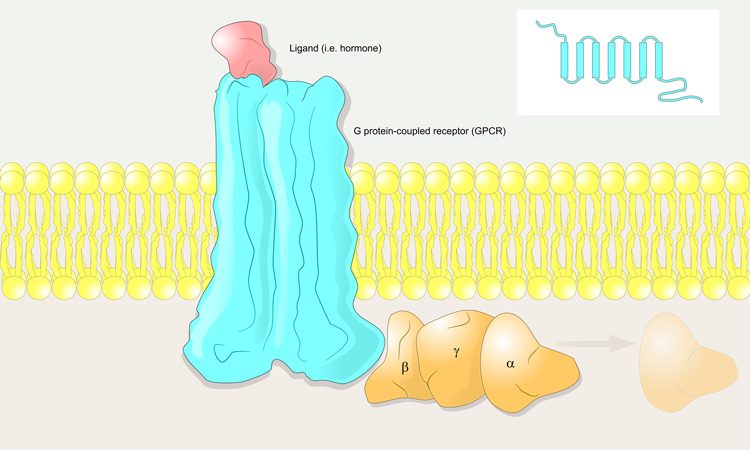Researchers identify novel signalling systems in cells
Posted: 1 November 2019 | Victoria Rees (Drug Target Review) | No comments yet
A study has revealed five new signalling processes in GPCR receptors on cells that have high therapeutic potential.


Researchers have discovered new signalling systems in the G protein-coupled receptor (GPCR) family of receptors on human cells. According to the researchers, the findings have high translational potential as therapeutic targets, as one third of all approved drugs target GPCR receptors.
The study was conducted by a team from the University of Copenhagen, Denmark, along with collaborators from University of North Carolina at Chapel Hill and Thomas Jefferson University, both US.
…combining computational drug design with pharmacology, machine learning and genomics, we have used a truly collaborative method”
The scientists revealed that five GPCRs are activated by 17 peptide ligands. Therefore, the known peptide-GPCR network has been expanded from 348 to 415 interactions.
“Researchers can spend their whole career studying one GPCR signalling system because their therapeutic potential is vast, as shown by the sheer number of medical drugs targeting them. In this study, we have identified five new such systems. In other words, this doesn’t happen every day and it might have huge implications for drug development,” said lead author to the study Professor David Gloriam.
Potential peptide ligands were identified from the proteome, consisting of around 20,000 proteins. The researchers focused on those secreted from the cell, as these peptides are involved in signalling. They then filtered out all those with a previously known function.
The researchers then used machine learning to predict what potential peptides could be ligands for GPCRs. The calculations took into account genomes from more than 300 species and attempted to answer to what extent the peptides were “evolutionary conserved” or had the same characteristics as peptides in the species.
“In combining computational drug design with pharmacology, machine learning and genomics, we have used a truly collaborative method in order to identify these new aspects of human biology. We would not have been able to identify this many pairs had it not been for the interdisciplinary nature of our method,” continued Gloriam.
The team selected 218 potential ligands which they screened against 21 receptors with three different techniques to capture the receptor responses: physical mass distribution inside the cell, internalisation of the receptor in the cell and the recruitment of a protein called β-arrestin.
This allowed them to identify the new pairings. The team will now continue the research to investigate how each of the five signalling systems work and can affect human physiology.
The findings were published in Cell.
Related topics
Drug Targets, Ligands, Protein, Research & Development
Related organisations
Copenhagen University, Thomas Jefferson University, University of North Carolina at Chapel Hill
Related people
Professor David Gloriam








